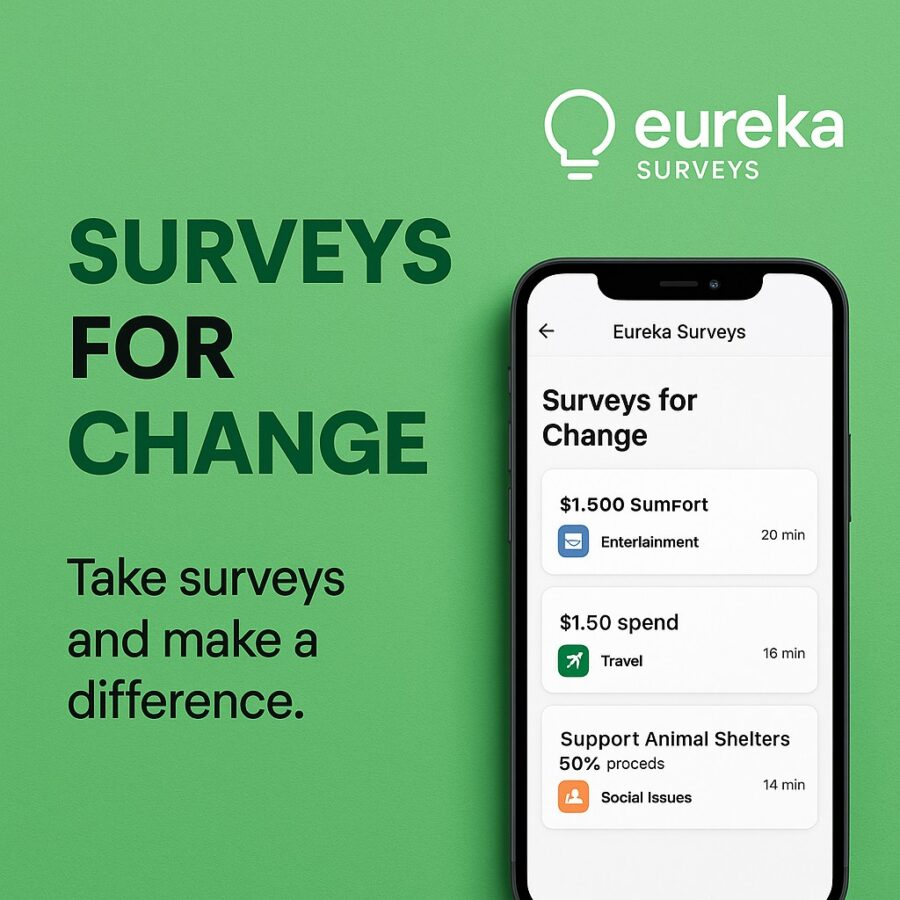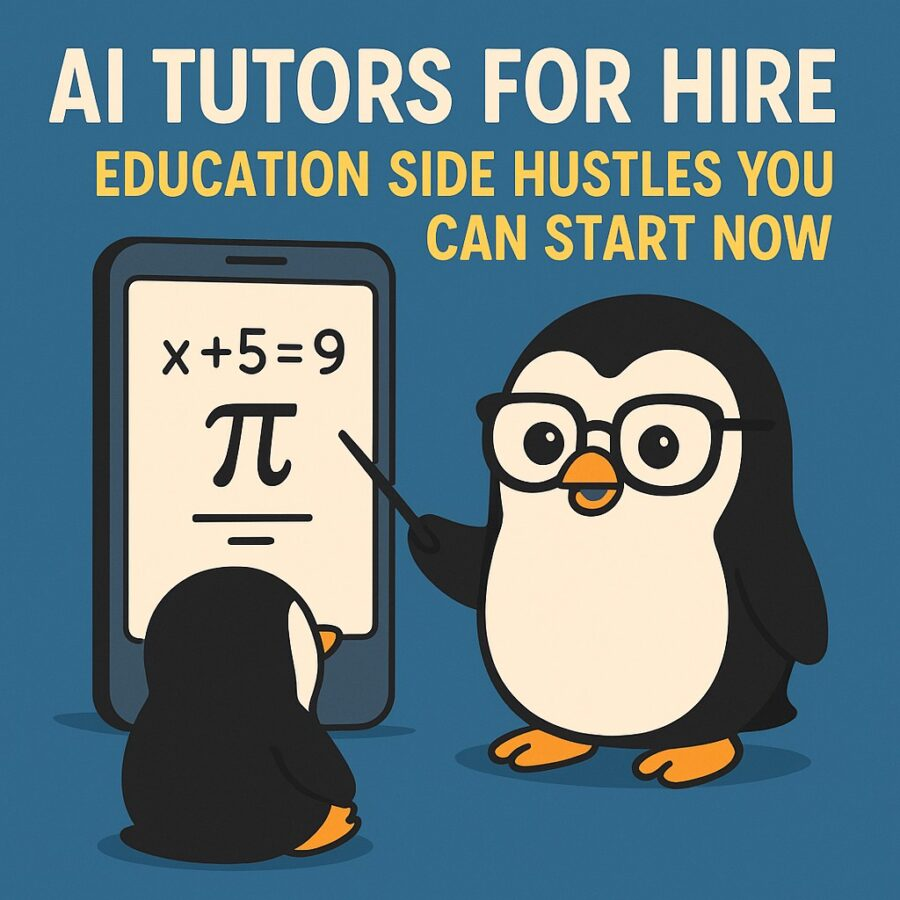Views: 0
Parents still want results. Schools still want graduation-ready skills. Learners still want support that fits into real life. The market for human tutoring has not vanished. It is changing shape. With the right toolkit and a steady, ethical approach, you can launch AI Tutors For Hire: Education Side Hustles You Can Start Now and build a part-time practice that pays while helping people learn faster.
This field is not science fiction. Districts use AI copilots. Language platforms ship new AI study modes. Meta-analyses of classroom trials report measurable gains when AI feedback is designed well and used with purpose. The key is to blend human judgment with machine support, then package the help so families and adult learners can trust it.
Why this side hustle works now
Several forces have converged. First, there is real adoption in schools. Khan Academy’s AI assistant Khanmigo expanded from about 68,000 student and teacher users in partner districts in the 2023–24 year to more than 700,000 in 2024–25 across over 380 partner districts. That growth signals mainstream comfort with AI assisted learning at scale. (Education Week)
Second, the tutoring market continues to be sizable. Industry trackers estimate the global online tutoring market at roughly 10 to 12 billion dollars in 2024–25 with mid-teens compound growth through 2030. Those numbers are not guarantees of income, but they show buyer demand is not a fad. (Grand View Research)
Third, evidence is accumulating. A 2025 meta-analysis of 51 studies found positive average effects of ChatGPT on learning performance and higher-order thinking, with outcomes moderated by course type, learning model, and duration. In other words, design matters and structure wins. (Nature)
Fourth, live tutoring enhanced by AI is proving useful. A randomized trial of Tutor CoPilot in K–12 math with 900 tutors and 1,800 students showed higher topic mastery when tutors had AI support, with the biggest lift for lower-rated tutors. That is a practical argument for human plus AI, not AI alone. (EdWorkingPapers)
Finally, policy thinkers are pointing beyond novelty. The OECD urges systems to rethink competencies in a future with powerful AI, not just add a tool to old tasks. Tutors who teach reasoning, judgment, and metacognition will stand out. (OECD)
These signals do not guarantee success. They do justify careful optimism for AI Tutors For Hire: Education Side Hustles You Can Start Now.
What an AI tutor-for-hire actually sells
You do not sell “AI.” You sell outcomes that feel honest and reachable.
- A weekly math clinic that builds problem solving in 8th grade algebra
- A reading group that pairs short texts with Socratic prompts and writing feedback
- A language coaching track that blends conversation practice with scenario drills
- A study hall that turns notes into retrieval practice and exam checklists
In each offer, the tutor is the decision maker. The AI is a tool that drafts feedback, generates practice, or simulates tasks. This is the difference between gimmick and craft.
Affiliate Link
See our Affiliate Disclosure page for more details on what affiliate links do for our website.

Starter kit for your practice
A compact tech stack keeps costs low and quality high.
- Core assistant for tutoring sessions. A chat model that can reason, show steps, and cite sources when retrieval is enabled.
- Retrieval layer for your own materials. A place to store rubrics, solved examples, glossaries, and reading packets.
- Feedback generator with human-in-the-loop. You review and edit before sending to a student. Randomized trials show stronger outcomes when instructors stay involved. (Stanford News)
- Scheduling and payments. Keep this boring and reliable.
- Privacy and consent sheet. Families should know what data you keep and why.
You can also partner with platforms that already organize demand. Language marketplace Preply is adding AI features for practice and insights, showing where the market is heading. Varsity Tutors pledged a national expansion of AI powered learning tools, which means families will come to you with expectations already set by mainstream brands. (Preply)
Pick a niche that fits your strengths
The fastest path to clients is a niche with a clear promise. Here are six viable lanes for AI Tutors For Hire: Education Side Hustles You Can Start Now.
1) Algebra and pre-calculus coaching
Offer a weekly plan that blends worked examples, error analysis, and short generated quizzes. Your AI helps make varied practice sets. You focus on strategy and misconception repair. Keep a small bank of problems you have solved by hand. Students learn the method, not the trick.
2) Academic writing workshop
Use AI to generate formative comments and counterexamples while you manage structure and argument. Research across contexts shows that AI assisted feedback can improve revisions when used with purpose and time limits, although design and instructor signals matter. Build those signals into your rubric. (PLOS)
3) Language conversation studio
Blend human conversation with AI scenario practice. Duolingo’s growth and premium AI modes illustrate consumer appetite for AI supported language training. That is a useful tailwind for independent tutors who offer a more personal version. (Reuters)
4) Study skills and exam prep
Teach retrieval practice, spaced repetition, and question writing. The AI generates flashcards from notes. You check for accuracy and remove noise. Students learn how to study, not just what to study.
5) CS and data bootstraps
For beginners, set up lab prompts that focus on reasoning steps. You review logic and style. Keep the AI on “show hints” rather than “show solutions.” University projects on AI supported teaching stress that humans must stay in the loop to preserve learning value. (Digital Education)
6) Teacher support as a service
Many teachers want help drafting rubrics, exit tickets, and question banks. Harvard’s resources for teaching with generative AI collect simple patterns that busy educators use already. Offer a monthly plan where you co-create materials aligned to their curriculum. (Harvard University)
How to structure a session
Students thrive on rhythm. Keep a simple arc.
- Warm-up recall. Two prior items to refresh.
- New skill in small steps. Explain, then ask the student to explain it back.
- Guided practice. The AI proposes two problems. You choose and adapt.
- Error hunt. Show a wrong solution. Ask the student to fix it and explain why.
- Exit ticket. One minute. One question. One plan for the week.
This structure protects attention and lets the AI do what it does best: generate practice and variations fast.
Affiliate Link
See our Affiliate Disclosure page for more details on what affiliate links do for our website.

Pricing and packaging without drama
Start with simple offers.
- Single session. One hour with a clear goal and a short written summary.
- Monthly plan. Four sessions plus asynchronous feedback on one assignment each week.
- Exam sprint. Two weeks of focused prep with daily check-ins.
You can adjust later as you learn what your market wants. If you sell on a marketplace, match its norms. Independent blogs compare pay and fee structures across tutor platforms, but your own page can carry you once you have testimonials. What matters is consistency and clear results. (Wiingy)
Credibility signals parents and adult learners notice
- Method page. One screen that explains how you mix human coaching with AI practice, how you supervise feedback, and how you handle privacy.
- Before-and-after samples. A redacted essay paragraph or math solution with comments.
- References to mainstream tools. Many families now recognize names like Khanmigo or “AI coach.” Khan Academy shares efficacy summaries for time-on-task targets with MAP Growth gains. Cite that kind of research to frame your own dosage plans. (Khan Academy Blog)
- Update cadence. Your curriculum evolves each term.
Clarity beats hype. You are hiring trust as much as you are selling time.
Ethics and boundaries that keep learning honest
Education leaders warn that if students outsource entire tasks, they lose the learning that writing and problem solving create. You must design your service so that the student’s brain does the work. Harvard’s guidance stresses purposeful use. The OECD urges systems to emphasize human skills that AI does not replace. Align to that. (Harvard Gazette)
Set ground rules:
- The AI drafts feedback. The tutor approves or rewrites.
- The AI can generate practice. The student must show steps.
- The tutor will ask the student to explain choices out loud.
- The final submission is the student’s work, not the model’s work.
Explain these rules in your onboarding. Families appreciate tutors who teach independence.
Curriculum building with AI as a co-author, not the author
A solid curriculum is modular. Create small “cards” that you can mix and match.
- Concept card. Definition, example, and a misconception.
- Practice card. Three graduated problems and one reflection prompt.
- Feedback card. Common errors with two targeted comments.
- Transfer card. Apply the idea to a new context.
Use your assistant to draft variations. You fill in the nuance and local examples. Over time, you will have a library that makes your prep time shrink while quality rises.
Asynchronous tutoring that does not cut corners
You can add a light async plan for busy students.
- Student submits a question or a paragraph.
- You run a feedback draft with your model using your rubric.
- You revise in your voice and return short advice plus one micro-exercise.
- You keep a log of what was sent and what improved.
Several studies suggest that AI assisted feedback can raise the quality of revisions when human intention and review guide the loop. That is your operating principle here. (PLOS)
Affiliate Link
See our Affiliate Disclosure page for more details on what affiliate links do for our website.

Marketing in plain sight
Post weekly notes that show your approach. Share a mini lesson, a strong student question, or a simple tip for parents about study design. You can also create a short “study guide” carousel that explains retrieval practice and spaced repetition. Language platforms like Preply talk publicly about human plus AI. Reference that ethos in your copy. It reads as modern without sounding like a sales pitch. (Preply)
If you teach languages, mention that the broader market is warm to AI features and show how your lessons are different from pure app study. Duolingo’s public growth around AI modes is a useful proof point that interest exists. (Reuters)
Safety, privacy, and consent
Publish a short privacy note. Families should know:
- What you store, for how long, and for what purpose
- Which AI tools you use and where data flows
- That you delete student work upon request
If you work with minors, gather written consent for any recordings or saved transcripts. If you reference third-party tools like Khanmigo or platform features, point to their privacy pages so families can read further. (Khanmigo)
Quality control that keeps results steady
Adopt two weekly habits.
Transcript spot-check. Pick five sessions. Read the AI drafted feedback you sent. Ask if it aimed at thinking, not shortcuts. Fix patterns you dislike.
Outcome journal. Track minutes of focused practice per week. Track revision cycles per essay. Khan Academy’s dosage findings are a good model for reporting time-on-task against gains. Your small practice can echo that clarity, even without a lab. (Khan Academy Blog)
If you serve teachers, ask for a two-sentence review each month on usefulness. Stanford-led work on feedback tools shows that teacher uptake and student satisfaction improve when AI support is designed for the human workflow. Your check-ins should mirror that idea. (Stanford News)
Affiliate Link
See our Affiliate Disclosure page for more details on what affiliate links do for our website.
What a first month can look like
Week 1. Choose a lane. Draft a one-page offer and a three-lesson starter pack. Set your rules for responsible AI use.
Week 2. Recruit two pilot students at a reduced rate. Run sessions. Measure time-on-task and confidence ratings.
Week 3. Add a simple website section with method, samples, and scheduling. Publish a short note that explains how you combine human coaching and AI practice.
Week 4. Collect testimonials. Refine your rubric. Add a light asynchronous plan.
By the end of 30 days you will know who you help best, which prompts produce the right kind of feedback, and how to speak about your work without jargon.
Common mistakes and how to avoid them
Turning the AI into a solution machine. Students need to wrestle with problems. Use the model to ask questions and propose next steps, not to supply final answers.
Hiding the role of AI. Be open. Parents and adult learners prefer clear talk about tools. The tutoring session is still about the person in front of you.
Skipping design for agency. Early research warns that chat-only support can lower a student’s sense of ownership. Use scaffolds that make the student think and decide. (arXiv)
Promising guaranteed scores. You guide effort and strategy. You do not control test makers. Sell honest progress, not miracles.
Ignoring the broader education conversation. Universities and ministries are debating what students should learn in an AI-heavy world. Tutors who teach critical thinking, verification, and clear writing will stay relevant. (OECD)
Example offers you can copy and adapt
Algebra Lift. Eight sessions. Goal: linear functions mastery. Includes custom practice, two graded exit tickets per week, and a skills tracker.
Writer’s Workshop Lite. Four sessions plus weekly async feedback. Goal: stronger thesis, cleaner paragraphs, and evidence use. Uses AI drafted comments that you review and sign.
Conversational Spanish Sprint. Six sessions focused on travel scenarios. Includes AI scenario drills between meetings, with you correcting transcripts for idioms and clarity.
Teacher’s Planning Companion. Monthly subscription. You co-create rubrics, question banks, and exit tickets with an AI assistant. You deliver the final drafts and stay on call for quick edits during the week.
Each offer lists deliverables and boundaries. Each includes your privacy and consent note. Each keeps the student as the author of their learning.
Affiliate Link
See our Affiliate Disclosure page for more details on what affiliate links do for our website.

What success looks like in six months
- A handful of steady clients who value your mix of human judgment and AI structure
- A library of lesson cards and feedback templates that cut prep time
- A clean funnel of testimonials focused on outcomes and experience
- A rhythm of small improvements driven by your logs and spot checks
Do not chase scale before you hone quality. The side hustle earns a reputation first. Growth is easier once your method and voice are clear.
Closing thoughts
Education rewards craftspeople who respect the learner. That has not changed. What has changed is the toolbox. You can use AI to draft formative feedback in seconds, to generate practice that matches the skill at hand, and to surface misconceptions quickly. You cannot abdicate judgment or ethics. The best outcomes still rely on a human who can listen, explain, and choose.
If you build AI Tutors For Hire: Education Side Hustles You Can Start Now around that premise, you will offer a service that feels both modern and grounded. Families will understand what they are buying. Adult learners will feel respected. Teachers will see you as a partner rather than a shortcut. Start small. Teach clearly. Log your work. Invite questions. Then revise your system like any good teacher revises a lesson after class.



